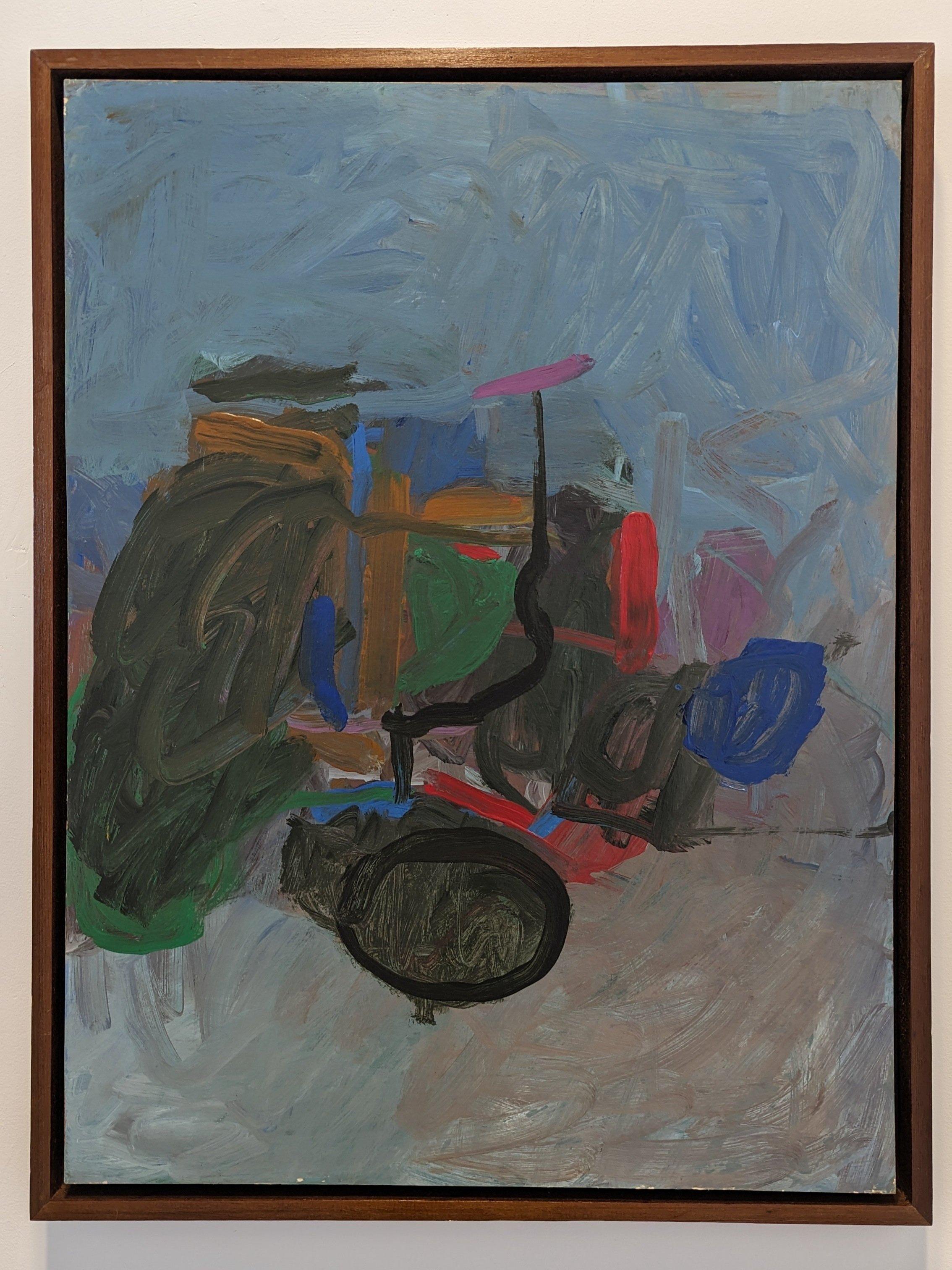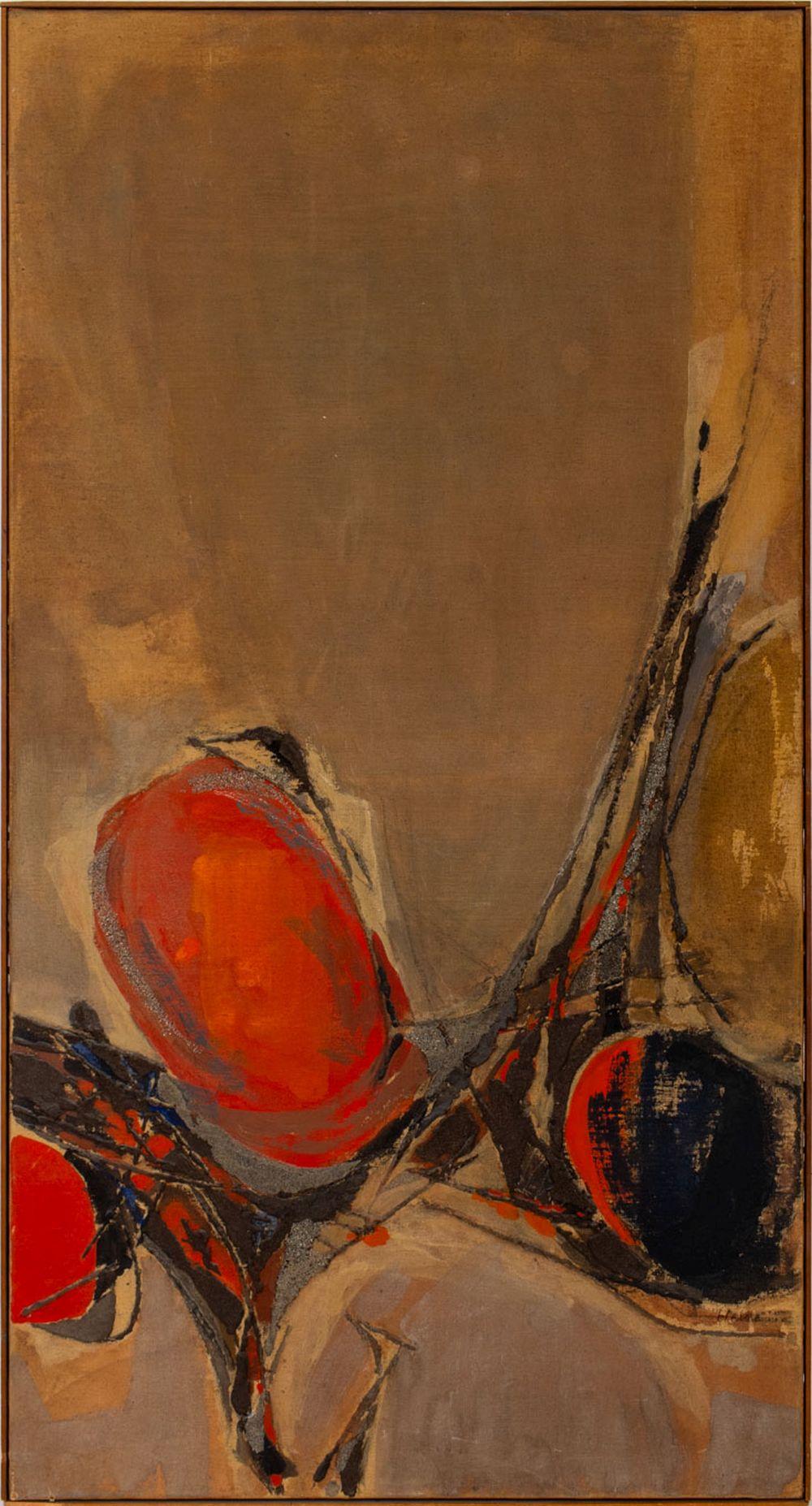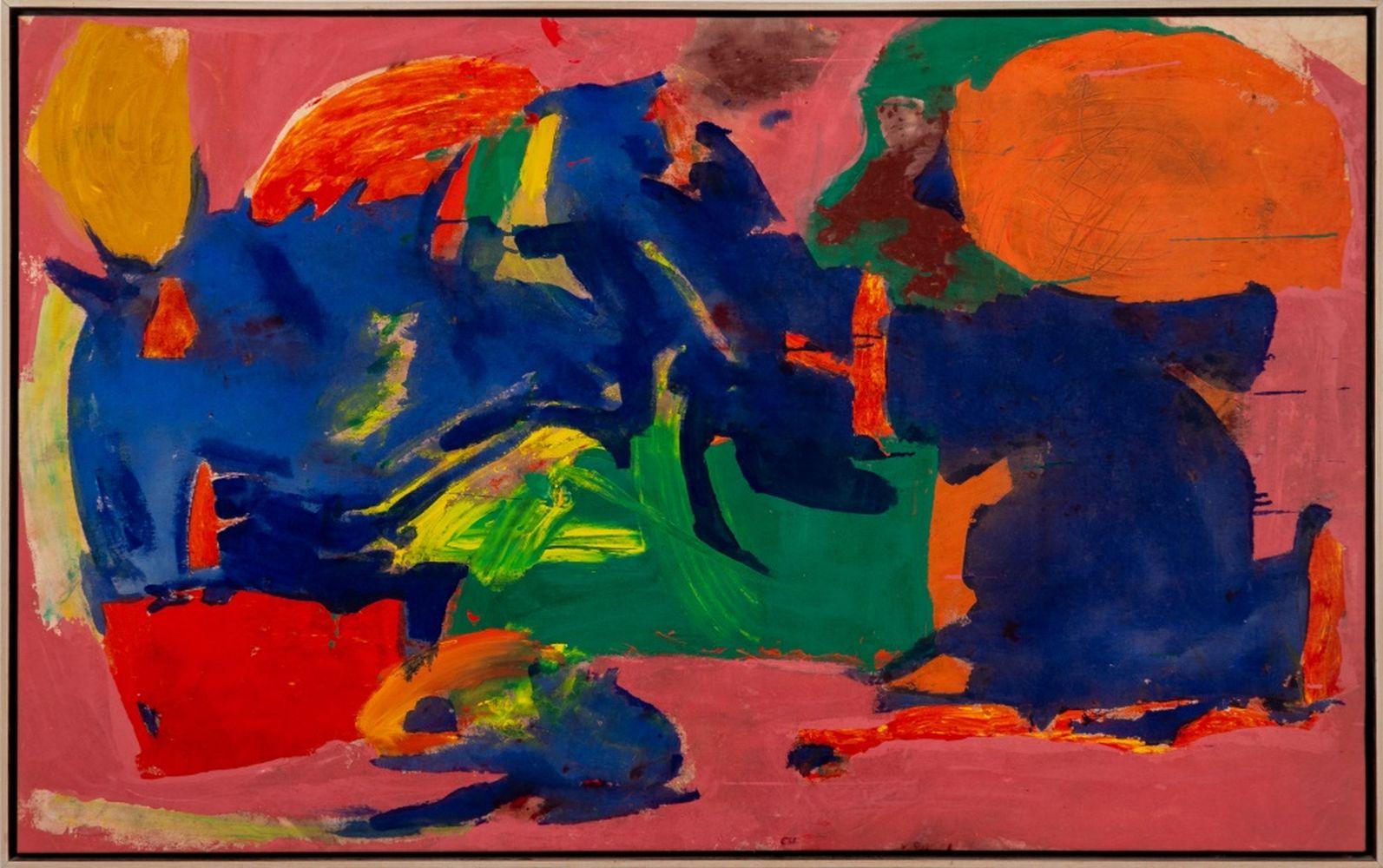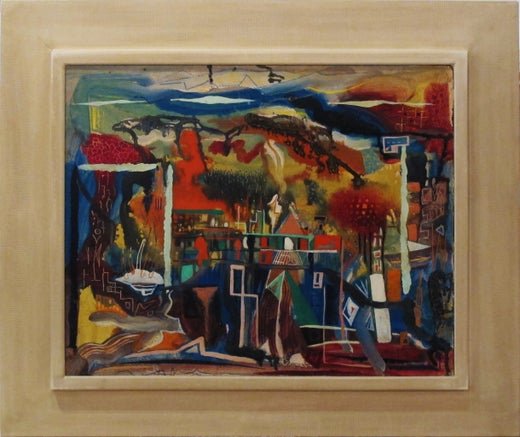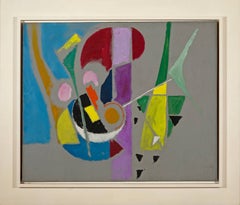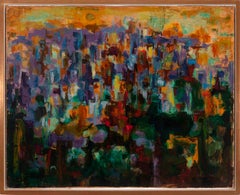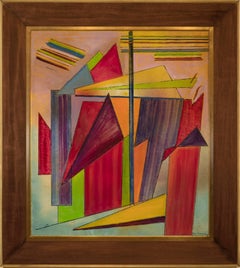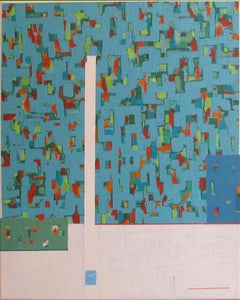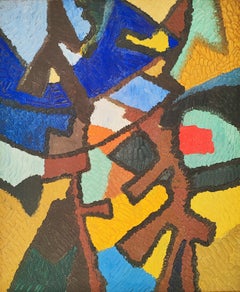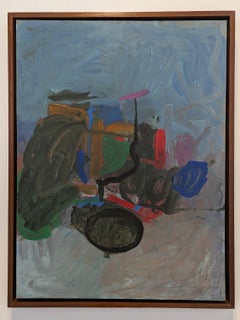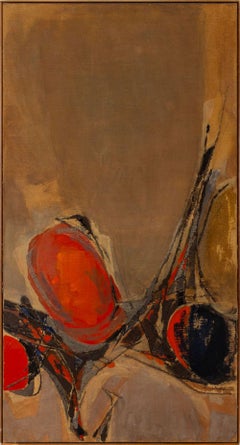Joseph Meierhans"Tarus"
About the Item
- Creator:Joseph Meierhans (1890-1981, American)
- Dimensions:Height: 34 in (86.36 cm)Width: 30 in (76.2 cm)Depth: 2 in (5.08 cm)
- Medium:
- Movement & Style:
- Period:
- Condition:
- Gallery Location:Lambertville, NJ
- Reference Number:Seller: JOLNJ1110201691stDibs: LU3741464293
Joseph Meierhans
Joseph Meierhans was one of the most important modernist painters associated with Bucks County and the New Hope artists. His large body of work spans over five decades beginning with a representational Ashcan style and evolving into variations of modernism, including cubist, semi-abstract, abstract and Abstract-Expressionist works. Meierhans felt closest in spirit to Kandinsky, of whom he explained, “His distinctive style consists of very loaded canvases—representational elements co-exist with abstract shapes." Kandinsky’s influence was apparent in Meierhans’s works from the 1940s. Meierhans compared painting to composing music, often saying, “A painting must sing for the eye as music does for the ears”. He felt that creating a balanced integrated abstract painting was much more difficult than painting a landscape. “Abstracts are far more difficult to execute than traditional paintings...landscapes always turn out alright, but I find myself destroying a lot of moderns. It must be a symphony of form, balance, and color. . . .or it’s terrible”. Born in Aargau, Switzerland, in 1890, Joseph Meierhans studied textile design in Zurich before coming to America in 1917. He first visited New York City while working for a Swiss textile mill. During this visit, Meierhans was offered a position with an American manufacturer as a textile designer and decided to stay. He was captivated by the New York art scene and soon began evening studies with Karl Knaths and later with John Sloan at the Art Students League of New York from 1919–21. He also studied with A. N. Lindenmuth in Allentown. In 1932, Meierhans had saved enough money from the textile business to buy a unique 52-acre property in Hagersville, Pennsylvania, about 15 miles from New Hope. Dubbed the Meierhans Manor, amidst rolling acres of farmland sat a stately Victorian mansion surrounded by an assortment of farm structures. There, he converted a 200-feet-long chicken coop into a studio and art gallery. For the next 25 years, he divided his time between New York and Bucks County, devoting as much time as possible to his painting. In 1957, he retired from the textile business enabling him to concentrate solely on his art. A generous man dedicated to familiarizing people with the rich local artistic tradition, Meierhans made exhibition space in his gallery available to seven other artists each year. Over the years, Ben Solowey and Katherine Steele Renninger were among the many artists to take advantage of this opportunity. While spending all of his “painting time” in Pennsylvania, Meierhans made efforts to stay involved in the New York art scene. He exhibited in the 1940s and 1950s at the Artist’s Gallery in New York, where he was the recipient of five solo shows. Meierhans also joined the avant-garde group known as AAA (American Abstract Artists) exhibiting in New York from 1946–57 and in faraway places as Europe and Japan. He also exhibited at the Whitney Museum of American Art, the Society of Independent Artists, the Salons of America, the Art Institute of Chicago, the Provincetown Art Association Museum, American Federation of Artists Traveling Exchange, the Pennsylvania Academy of the Fine Arts and the Crest Gallery, New Hope.
- ShippingRetrieving quote...Shipping from: Lambertville, NJ
- Return Policy
More From This Seller
View All1930s American Modern Abstract Paintings
Canvas, Oil
1950s Abstract Abstract Paintings
Canvas, Oil
20th Century Abstract Abstract Paintings
Masonite, Oil
2010s Abstract Expressionist Abstract Paintings
Canvas, Acrylic
1950s Abstract Abstract Paintings
Canvas, Oil
2010s Abstract Expressionist Abstract Paintings
Canvas, Acrylic
You May Also Like
1960s Abstract Abstract Paintings
Oil
1960s Abstract Geometric Abstract Paintings
Paper, Oil, Board
Mid-20th Century Modern Abstract Paintings
Canvas, Found Objects, Mixed Media, Oil
20th Century Abstract Abstract Paintings
Oil
1990s Abstract Abstract Paintings
Late 20th Century Contemporary Abstract Paintings
Canvas, Oil, Watercolor

